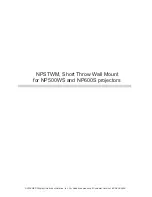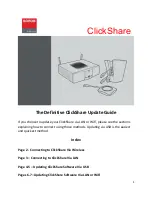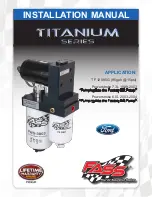
Unit Description
31
Refrigeration System
Components
The refrigeration system i
n
these units does
not have a three-way valve. Instead, it uses a
condenser inlet solenoid (CIS) and a hot gas
solenoid similar to multi-temp units. Some of the
main components are briefly described below.
Solenoids and Valves
Condenser Inlet Solenoid (CIS)
This valve stops the flow of refrigerant to the
condenser. This solenoid is energized (closed)
when the unit is operating in the heat and defrost
modes. This is a normally open valve
.
Hot Gas Solenoid (HGS)
This valve is energized (open) in the heat and
defrost modes. It allows hot gas to enter the
evaporator coil. This is a normally closed valve.
Purge Valve (PV)
The purge valve is energized (open) in the purge
mode (and in heat and defrost modes) to move the
refrigerant out of the condenser to ensure
adequate refrigerant is available
.
This is a
normally closed valve.
Liquid Injection Solenoid (LIS)
This valve helps control the temperature of the
scroll compressor. It is energized or pulsed (open)
when the scroll compressor temperature exceeds a
set value to inject liquid refrigerant directly into
the compressor. The liquid refrigerant flashes to a
gas to effectively cool the compressor. This valve
is normally closed.
Discharge Pressure Regulator (DPR)
This component is a mechanical control device
used to maintain a minimum discharge pressure
during heat and defrost. The valve controls
discharge pressure based on the actual system
pressure.
Throttling Valve
This component is a mechanical control device
used to limit the suction pressure to the
compressor.
Condenser Check Valve
This check valve prevents refrigerant from
migrating from the receiver tank back into the
condenser during the heat and defrost modes.
Purge Check Valve
This check valve prevents refrigerant from
migrating from the accumulator back into the
condenser during the heat and defrost modes.
Receiver Tank Pressure Check Valve
This check valve allows hot gas to force the liquid
refrigerant out of the receiver tank during the heat
and defrost modes. It prevents refrigerant from
migrating from the receiver tank to the hot gas
line during the cool mode.
Sensors, Switches, and
Transducers
Compressor Temperature Sensor
This sensor supplies the compressor temperature
to the microprocessor. This information is used by
the microprocessor and software to determine the
unit operating conditions and control the LIS.
High Pressure Cutout Switch (HPCO)
This normally closed switch monitors the
discharge pressure at the compressor. It opens on
high discharge pressure to shut the unit down to
prevent damage.
Discharge Pressure Transducer
This transducer supplies the discharge pressure at
the compressor to the microprocessor. This
information is used by the microprocessor and
software to determine the unit operating
conditions.
Summary of Contents for UT-1200
Page 10: ...Table of Contents 10...
Page 20: ...Safety Precautions 20...
Page 76: ...Operating Instructions for Premium HMI Control Panel 76...
Page 88: ...Electrical Maintenance 88...
Page 98: ...Engine Maintenance 98 Figure 167 Fuel Components...
Page 142: ...Refrigeration Service Procedures 142...
Page 148: ...Clutch Maintenance 148...
Page 150: ...Structural Maintenance 150...
Page 162: ...Wiring and Schematic Diagrams Index 162...
Page 163: ...163 Schematic Diagram Page 1 of 2...
Page 164: ...164 Schematic Diagram Page 2 of 2...
Page 165: ...165 Wiring Diagram Page 1 of 5...
Page 166: ...166 Wiring Diagram Page 2 of 5...
Page 167: ...167 Wiring Diagram Page 3 of 5...
Page 168: ...168 Wiring Diagram Page 4 of 5...
Page 169: ...169 Wiring Diagram Page 5 of 5...















































